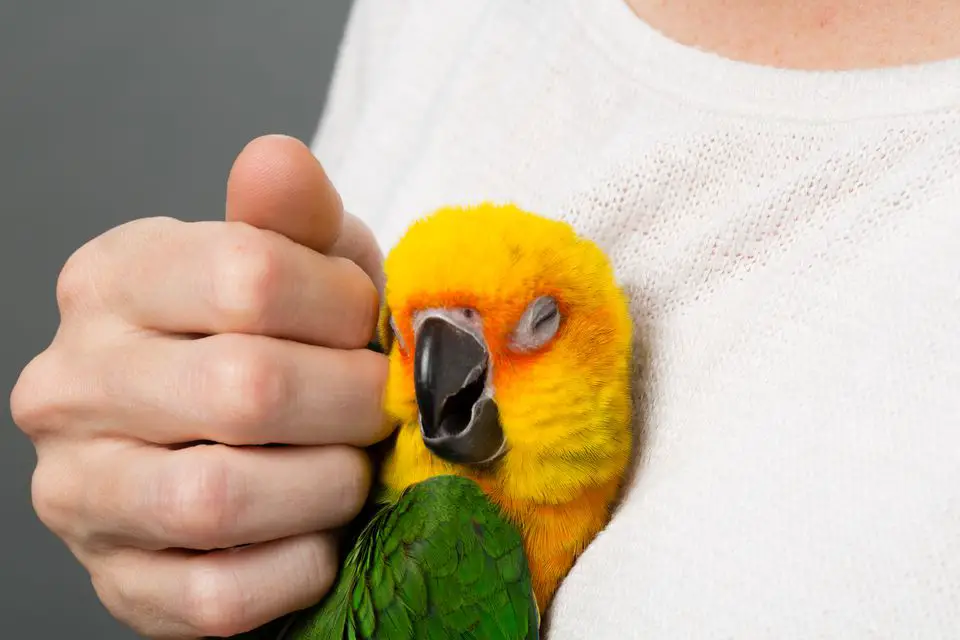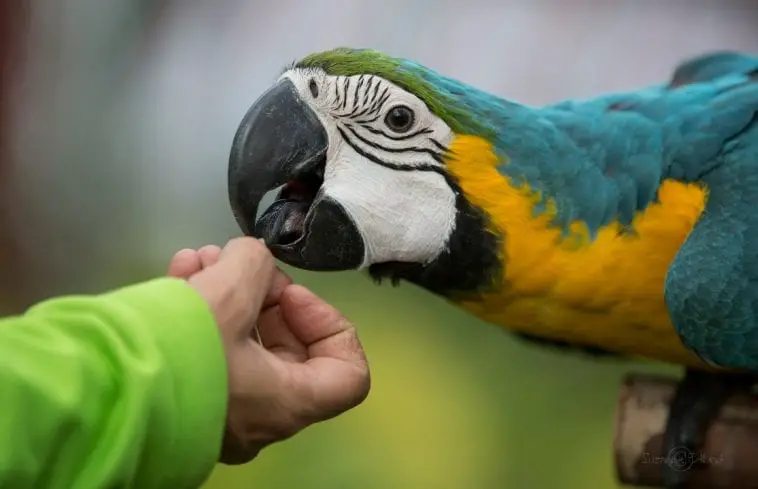Parrots are one of the most intelligent bird species. They are known to have a lot of tricks, and that is what makes them a popular pet. Though blessed with intelligence, they still need help to learn a lot of stuff.
Due to the popularity of parrots and their unique abilities, there is a high demand for parrot trainers. Do you think it’s easy? You better think again. Let us put it this way. Dogs can be a handful during the training period. What more do you think of parrots who can sometimes be stubborn?
Relax. Being a parrot trainer is not an impossible task. It is challenging as you can encounter some bumps along the way, but it is worth it. You are probably asking yourself now on how to be a parrot trainer. Here are some answers for you that can help on how to be an effective parrot trainer.
Know your subject
Before getting deep with the specifics on how you can train a parrot effectively, it is a must to know the subject. Familiarize yourself with parrots. Learning about their habitat, food, and behavior can help you understand these creatures.
Put in mind that you cannot be an expert trainer if you don’t know anything about them. Facts will be your ally in becoming an effective teacher. This way, you can handle them comfortably.
Is it hard to train a parrot?
Training a parrot is not impossible but not easy as well. By nature, these feathered friends are classified as prey. Unlike natural predatory animals, parrots need more time, attention, and patience.
Based on their behavior, these birds are timid and cautious. You cannot blame them as they are naturally hunted by predators. Their initial reaction will always be proceeding with caution.
Although it may take a big chunk of time, parrots are very capable of learning things. Don’t forget that they are equipped with intelligence that makes it easier to learn things. The proof of that is you can see trained parrots in some zoos, parks, and even movies.
Learn the secret of taming
Before you get excited about training the parrots, it is important to learn how to tame them. There are procedures that you can use to make them obey. Taming the pets is a must if you want to impose a successful training.
Operant Conditioning
Operant is also called Instrumental Conditioning. It is when you inflict the learning process with the use of punishment and reinforcement. This not highly recommended as it can create a negative impact on the behavior of the animals.
If you use this method with the parrots, they may react with aggression, avoidance, and escape. It can also impose fear through its surroundings. This tactic sometimes uses flicking of the bird’s beak and water spray.
This type of conditioning may use four methods. It may work, but it has a high risk of getting the birds traumatized. If that happens, you can end up with an aggressive parrot than a trained one.
Positive Punishment
Positive punishment is something that we can simply call punishment. It occurs when the behavior of the pet is disciplined with callous stimulus. Let’s give you an example. If the bird bites and we flicked its beak, it could lessen the biting behavior.
Negative Punishment
The negative punishment is the type of method where you take away the stimulus after bad behavior. Let’s put it this way. If your bird is behaving aggressively while playing, you can take away the toy. It will let them learn that if they are behaving inappropriately, it will be taken away. The result would be a decrease in the aversive attitude.
Positive Reinforcement
In positive reinforcement, the parrot is rewarded for doing a good thing. If the bird followed what you are trying to teach and is given a treat, it is an example of positive reinforcement. The result will make your pets follow what is being taught.
Negative Reinforcement
In this type of method, the stimulus is presented to the subject, and it would need something to make it stop. Here is an example. You put a water spray that continuously sprinkles water and let the birds press a lever that would make it stop. It is a practice of negative reinforcement.
Classical Conditioning
Classical Conditioning is also known as Pavlovian or Respondent Conditioning. It is the more favored type of conditioning when it comes to bird training. This type uses a pair of stimuli to make things work.
You would need a potent stimulus and a neutral one. It will not work unless used together. What you can do is prepare a bell when it’s food time. But this is not a one-time thing. For this conditioning to work, it needs certain phases. Make sure that the parrots will have continuous exposure to both potent and neutral stimuli. It is for them to build a habitual behavior in response to the stimulus.
Training Tips
Once the training starts, there are things that you need to keep in mind. It is to make sure the learning experience will be as pleasant as possible. Here are some of the best tips that can help to have a smooth training session with these feathered pets.
- Preparation
Before starting each training, make sure that you are prepared. This includes the treats you can give them for doing a good job. Aside from that, prepare essential equipment too. There are instances when you need to use a perch, stick, towel, and bird leash.
Things need to be ready ahead of time. This way, the training will go continuously instead of you trying to find things in the middle of it. The learning will go smooth as there are no distractions.
- Timing
The timing is an important factor. Keep in mind that birds are living creatures, and they have feelings and mood swings too. If they are not in good condition, they will not accept new things introduced to them. The birds will just react like a bunch of spoiled brats throwing tantrums.
- Don’t Over Do
Training a parrot cannot be forced. If you think teaching them in longer periods would help, then you got it all wrong. The sessions should be consistent but short. This way, their attention is focused on what you are showing them. The training can be done twice or thrice a day but within 10 to 15 minutes limit.
- Comfort Zone

Birds will learn easily if you can establish trust. This way, they will not have a feeling of aversion. Familiarity is the key. Try to hold and pet them first so they can be at ease with your presence.
Once trust has been set, it will make the training sessions comfortable. It is the same in humans. Before you follow someone, there is a need for mutual trust. This way, teaching the birds is not going to be difficult.
- Patience
It is the most integral part when training a parrot. Even if you are teaching them to talk or getting familiar with towers and sticks, you need patience. Teaching them all these things can take time. It will be a repetitive type of activity, and frustration will get in your way.
Training Takeaway
Though different methods are used when training a parrot, choose what is applicable. Observe the kind of behavior your bird has and create a training procedure based on it. The learning of one bird can be quick, as others may take a little time. Watch out for the signs that they are showing as it can help you determine the right formula in teaching them. If you can consider all these things, you are on the way to becoming a good parrot trainer.



